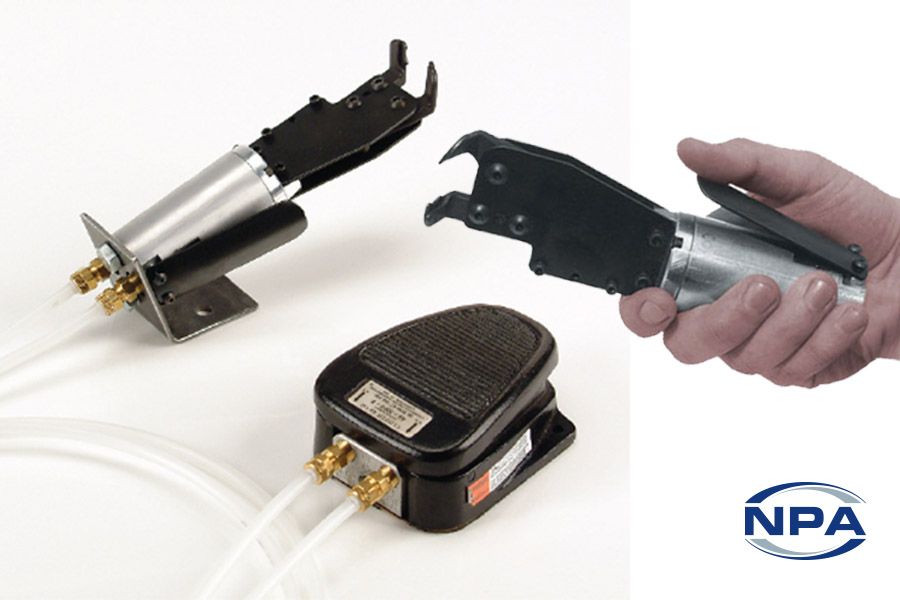
Hand air tools, as the name suggests, are a type of air tool that is designed to be held and operated by hand. They are powered by compressed air, which is generated by an air compressor. Hand air tools are used in a variety of industries, including construction, manufacturing, and automotive repair.
Advantages of using a hand air tool versus other kinds of air tools
Hand air tools have several advantages over other kinds of air tools, including:
- More portable: Hand air tools are typically smaller and lighter than other types of air tools, making them more portable and causing less fatigue.
- Easier to use: Hand air tools are typically easier to control than other types of air tools, making them ideal for tasks that require precision.
- Less expensive: Hand air tools are typically less expensive than other types of air tools.
Different types of hand air tools
There are many different types of hand air tools available, each with its own specific purpose. Some of the most common types of hand air tools include:
- Air impact wrenches: Air impact wrenches are used to tighten and loosen nuts and bolts. They are ideal for heavy-duty tasks, such as removing lug nuts from tires or changing brake pads.
- Air drills: Air drills are used to drill holes in a variety of materials, including metal, wood, and plastic. They are more powerful than electric drills, but they can be more difficult to control.
- Air sanders: Air sanders are used to sand and smooth surfaces. They are ideal for removing rust, paint, and other finishes.
- Air grinders: Air grinders are used to grind and polish surfaces. They are ideal for removing burrs, shaping metal, and sharpening blades.
- Air hammers: Air hammers are used to drive nails, drill holes, and break up concrete. They are ideal for heavy-duty construction and demolition work.
- Air Tools with Jaws: The jaws on air tools are used to grip and manipulate cables. They are typically made of hardened steel and are designed to be durable and long-lasting.
- The jaws on air tools are typically adjustable, so that they can be used to grip cables of different sizes and thicknesses.
Air tools with jaws are commonly used for a variety of tasks, including:
- Crimping cable connectors: Air tools with jaws can be used to crimp cable connectors, such as lugs, ferrules, and terminals. This is a common task in electrical and telecommunications work.
- Cutting cables: Air tools with jaws can also be used to cut cables. This is a common task in construction and demolition work.
- Stripping cables: Air tools with jaws can also be used to strip cables, which removes the insulation from the cable. This is a common task in electrical and telecommunications work.
Here are some examples of air tools with jaws that are commonly used for cable work:
- Air impact crimpers: Air impact crimpers are used to crimp cable connectors. They are typically used in heavy-duty applications, such as electrical and telecommunications work.
- Air cable cutters: Air cable cutters are used to cut cables. They are typically used in construction and demolition work.
- Air strippers: Air strippers are used to strip cables. They are typically used in electrical and telecommunications work.
When choosing an air tool with jaws for cable work, it is important to consider the following factors:
- The type of cable you will be working with: The type of cable you will be working with will determine the size and type of jaws you need. For example, if you will be working with heavy-duty cables, you will need an air tool with jaws that are large and durable enough to handle the task.
Different shaped cables, such as round versus flat, will also require a different hand air tool.
- The compression psi required: Different hand air tools require different levels of compression psi. Make sure that your air compressor can provide the required amount of compression psi for the hand air tools you want to use.
- The frequency of use: If you will be using the air tool frequently, you will need a tool that is durable and well-made. If you will only be using the air tool occasionally, less expensive tools may be sufficient.
- Your budget: Air tools with jaws can range quite dramatically in price. Therefore, it is important to set a budget before you start shopping so that you do not overspend.
Consider these safety tips when using air tools:
- When choosing an air tool, make sure that it is compatible with your air compressor.
- Always wear safety glasses and other personal protective equipment when using air tools.
- Be aware of the dangers of compressed air, such as the risk of explosion.
- Never use an air tool on a live electrical circuit.
- Store air tools in a dry place when not in use.
Conclusion
Choosing the right hand-held air tool with jaws for your needs is important. By considering the factors listed above, you can choose the hand air tool that is right for your budget and will meet your needs.
NPA has a range of hand air tools with jaws for different sized and shaped cables.
You can view them here at NPA’s online store

